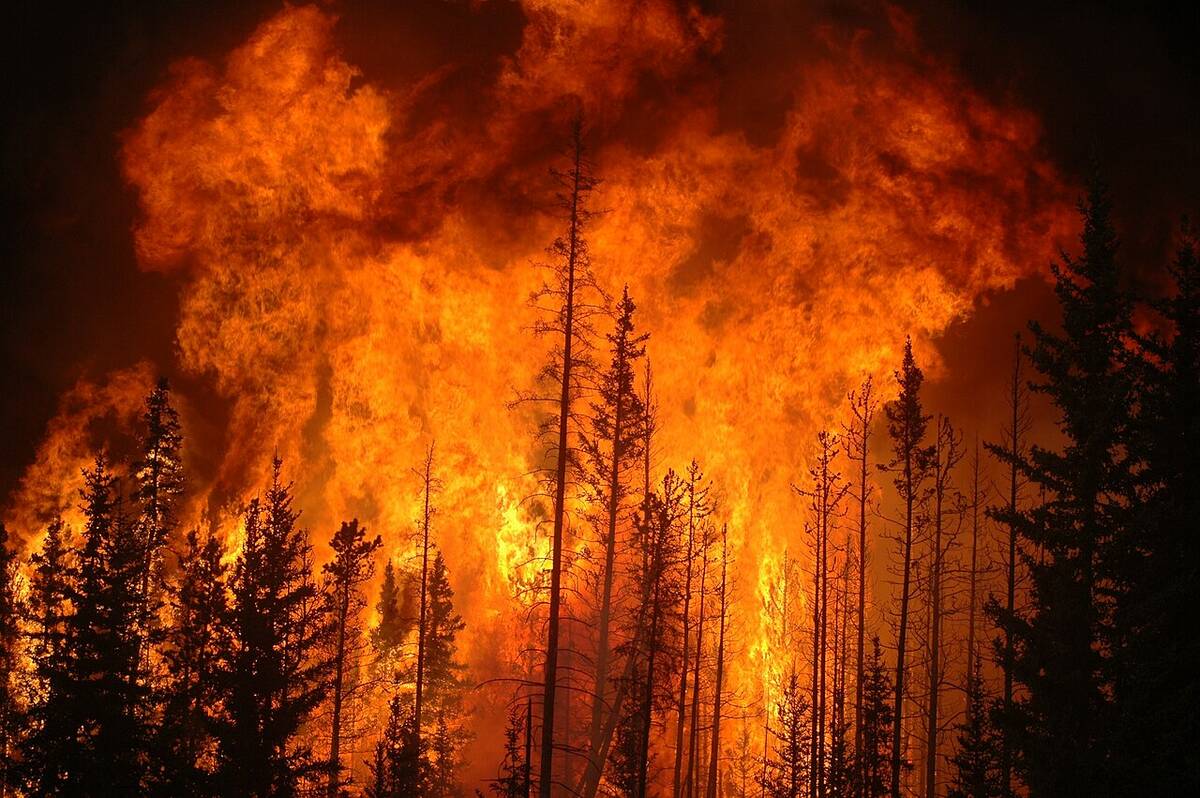In the last article, we looked at the five reasons for the seasons. Sounds like it should be a song, doesn’t it? (“Time of the Season” by the Zombies always comes to mind — I know, I’m old.)
To finish that discussion, let’s look at the “march of the seasons” and the extremes we encounter in day length during the year. Then we will move into the composition of the atmosphere, because if you don’t understand that, then a lot of what happens, weather-wise, will not make sense.
Day length is measured by the interval between the sun rising and setting each day. The two extremes of day length (shortest and longest days) occur in December and June and are referred to as the solstices.
Read Also

YEAR IN REVIEW: 2025 a year of weather extremes
Wildfires, drought and flash floods, oh my! Looking back at the year’s headline-grabbing events in Canada and around the world.
On Dec. 21 or 22, we experience the winter solstice in the Northern Hemisphere, where the sun-Earth angle has the sun directly overhead at 23.5 degrees S latitude. At that time, the Northern Hemisphere experiences its shortest day length and every point north of 66.5 degrees N (or the Arctic Circle) experiences 24 hours of darkness.
If you have ever wondered why the Arctic Circle is at 66.5 degrees N, it has to do with the tilt of the Earth. The North Pole is 90 degrees N and the tilt of the Earth is 23.5, so if we do the math, 90 – 23.5 = 66.5 degrees.
Areas north of this line will experience at least one day of complete darkness and one day of complete daylight during the year. The further north from this point you go, the more days of darkness and full daylight you get.
On June 20 or 21, we experience the summer solstice. The sun is directly overhead at 23.5 degrees N latitude, giving us our longest day. If you’re interested in the math behind the altitude of the sun on this day in southern Manitoba, it is: 90 (North Pole) – 50 (our latitude) + 23.5 (the number of degrees north of the equator the sun is) = 63.5 degrees.
That means the sun is 63.5 degrees above the southern horizon. Conversely, in winter, the sun’s angle in southern Manitoba is: 90 – 50 – 23.5 = 16.5, a huge difference in sun angle.
You would expect the shortest days to be the coldest and the longest days to be the warmest, but this is not the case. I have been teasing you about this since late December, but you will have to wait to fully understand why the warmest and coldest days usually occur about one month later.
Our last two important dates in the “march of the seasons” are the vernal and autumnal equinoxes. These are the dates when the sun is directly over the equator, giving 12 hours of daylight to all places on Earth. The vernal equinox occurs on March 20 or 21 while the autumnal equinox occurs on Sept. 22 or 23.
We will revisit the sun’s journey from south to north and back again later, as this simple process helps drive much of the weather we experience in Canada. Most of our weather is driven by the differential heating of the Earth.
But before we can tie this into everything, we need to look at the composition of our atmosphere.
Inner space
When looking at the Earth’s atmosphere, there are a couple of ways of breaking it down. If we look at the composition, we find two layers: the heterosphere and the homosphere.
The heterosphere begins at about 80 kilometres up and extends to the beginnings of space. This part of the atmosphere makes up only about 0.001 per cent of all our atmosphere’s mass, and as the name suggests, the gases in this part of the atmosphere are not evenly distributed. ‘Hetero’ means different and ‘homo’ means the same.
In the homosphere — everything below 80 km — we find the vast majority of our atmosphere’s mass. While the density of gases in this layer drops off fairly rapidly as you leave the Earth’s surface, the mixture of gases stays relatively uniform, with the exception of water and ozone.
The rapid drop in density as we move upward occurs because gravity is pulling down on the air, compressing it near Earth’s surface.
In fact, once you travel upward to a height of around 5,000 metres, nearly half of the atmosphere’s mass is below you. At a height of 11,000 metres (where most jets fly) more than 75 per cent of the atmosphere’s mass is below you.
The homosphere is almost entirely made up of three gases: nitrogen (about 78.084 per cent), oxygen (about 20.946 per cent) and argon (about 0.934 per cent). The remainder (about 0.034 per cent) is made up of neon, helium, carbon dioxide, methane, krypton and ozone, along with other trace gases.
The second way to describe the composition of our atmosphere uses temperature. We can break the atmosphere into four distinct layers: thermosphere, mesosphere, stratosphere and troposphere. These layers are probably more familiar and most useful to any of us who try to understand the weather.
Next week, we will look back at weather over the second month of 2023, then look ahead to the latest computer model predictions for spring and early summer. Then we will continue our look at the atmosphere by breaking down these layers and discover why most of our weather is confined to just one of them: the troposphere. Stay tuned!
















